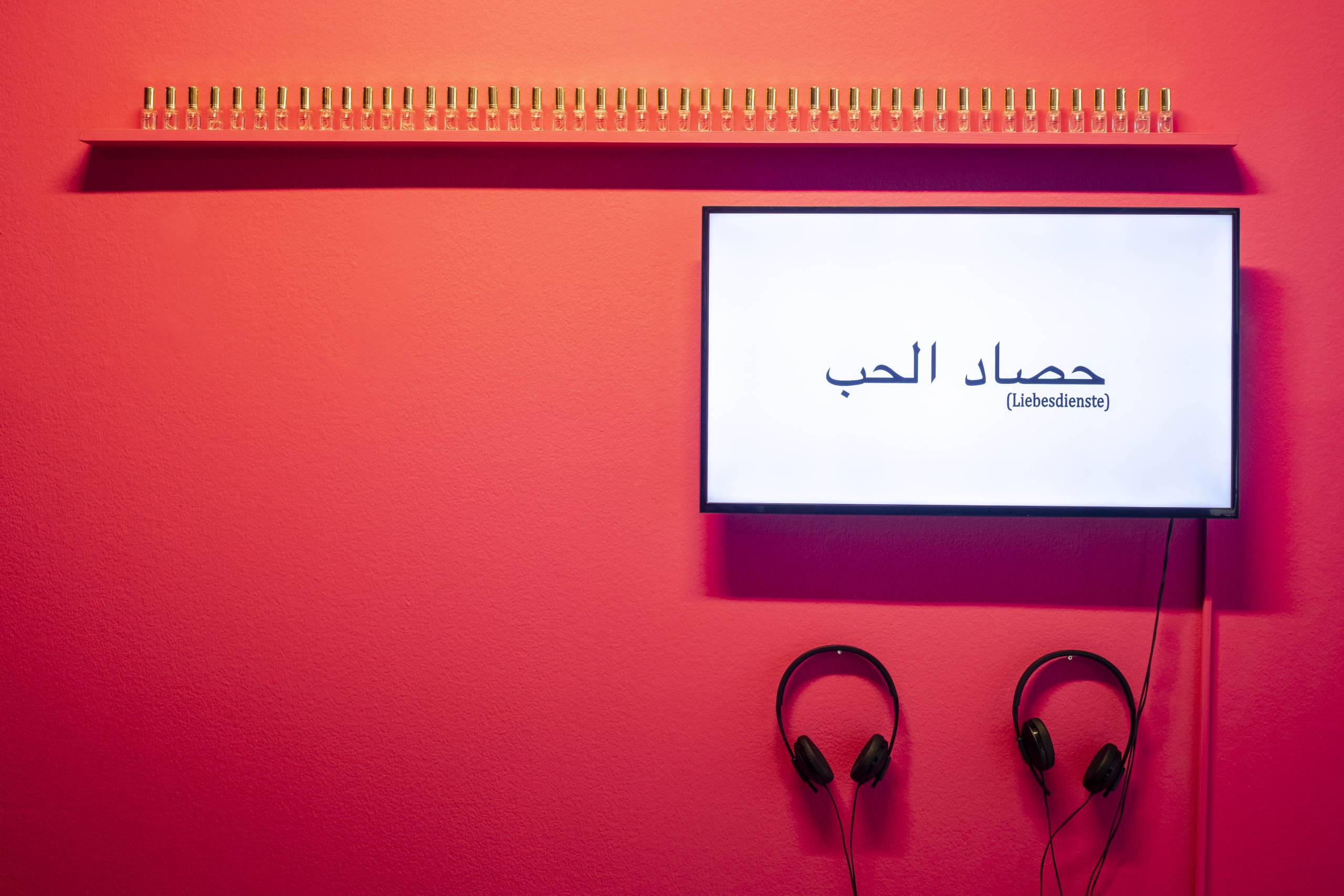„Shake off the chains of too constricted space. He who has burst from all dimension’s bonds Ranges through all directions, like the sky. The rose’s scent by parting from the rose.“
Muhammad Iqbal
With Zainab Andalibe, Kenza Benamour, Hicham Berrada, Mohammed Laouli, Abdessamad El Montassir, Anna Raimondo, Leila Sadel, Anike Joyce Sadiq
Today, the visual sense predominates our ways of imagining the world that surrounds us. Contemporary societies are defined by an incessant flow of images. Social networks dictate the laws of information by producing visual codes by the second, posted in a snap on Instagram or Facebook.
Thus, the unmanifest has been weeded out of the collective imaginaries, and the spiritual dimension has been dismissed from contemporary concerns. By imposing its “universal” codes and standards, the West relegated the unmanifest to the bottom of its heap. However, today’s Western societies show an emerging quest for spirituality and manifold attempts to reintegrate the unmanifest into everyday life.
If we consider examples of contemporary realities on the African continent, the dialogue between spiritual and material dimensions has at times been collisive, but it has never broken off. The current challenge is to inscribe this coexistence in a dynamic continuity without allowing ourselves to be imprisoned in an outdated, traditionalist vision of an (often self-) exoticised Africa. In his essay Reinventing African Modernity, Blondin Cissé suggests an approach of reconnecting to broken heritage: “At stake is no longer the question of imprisoning oneself in the dilemma of oneself and the other, nor whether to embrace the outline of a conquering and alienating Western modernity or not, but to deploy a real strategy of emancipation […].” This strategy unfolds through reappropriating spiritual traditions and interweaving them into contemporary realities, channeling the relation of the visible to the invisible.
Invisible is an invitation to re-learn to perceive beyond the margins of the visible. The presented works offer a dialogue between artistic strategies, each of which integrates unmanifested spiritual dimensions in its own way, by focusing on practices of rituals and myths rooted in everyday life’s material realities.
In collaboration with Le Cube (Rabat), the art and research project Attokoussy – consisting of the artists Leila Sadel, Zainab Andalibe, Mohammed Laouli, and Abdessamad El Montassir – endeavours to open a space of translation and rereading on the subject of rites and superstitions in Morocco.
Artist Anna Raimondo bids us to close our eyes and listen to the sea, a place of passage and a metaphor for encounters between coexisting cultures. Through intimate fictions, her project weaves together daily rituals, dreams, and religious renditions related to the sea and its mysteries.
With her series Reconciliation, Kenza Benamour looks at daily rituals and questions the “spiritual amnesia” of contemporary societies. Her diptych testifies to sacred and profane experiences by revealing the spiritual significance that unites them beyond the cultural constructions that seem to separate them.
Hicham Berrada turns the barely visible movement of a magnetic flower into a surreal experience. The inorganic flowers in Les Fleurs consist of iron particles, which form a magnetic field in a liquid. Berrada considers flowers as metaphors for suffering and perseverance, which multiply without fighting and disappear without complaining. These abilities of the nature that Berrada simulates in his video could also be understood as an anthropological analogy.
With You Never Look at Me From the Place From Which I See You, Anike Joyce Sadiq presents an installation that intertwines different perspectives and that plays with the simultaneity of presence and absence. Sitting on a chair at the centre of the installation and looking at a projection, the single viewer becomes part of the piece and is being observed by other viewers. Thus, the person on the chair cannot perceive the work in its totality – to contemplate the whole work, one must take into account his or her own relation to other viewers and one’s own immersion in the environment.
The exhibition is a reflection on perceptions and visibilities of liberation processes – above all internal; those of an inside struggle – which require constant effort to seek out intuitive knowledge and channel relations to the invisible.
Curated by Alya Sebti
Curatorial Assistant: Nikola Hartl
Supported by





